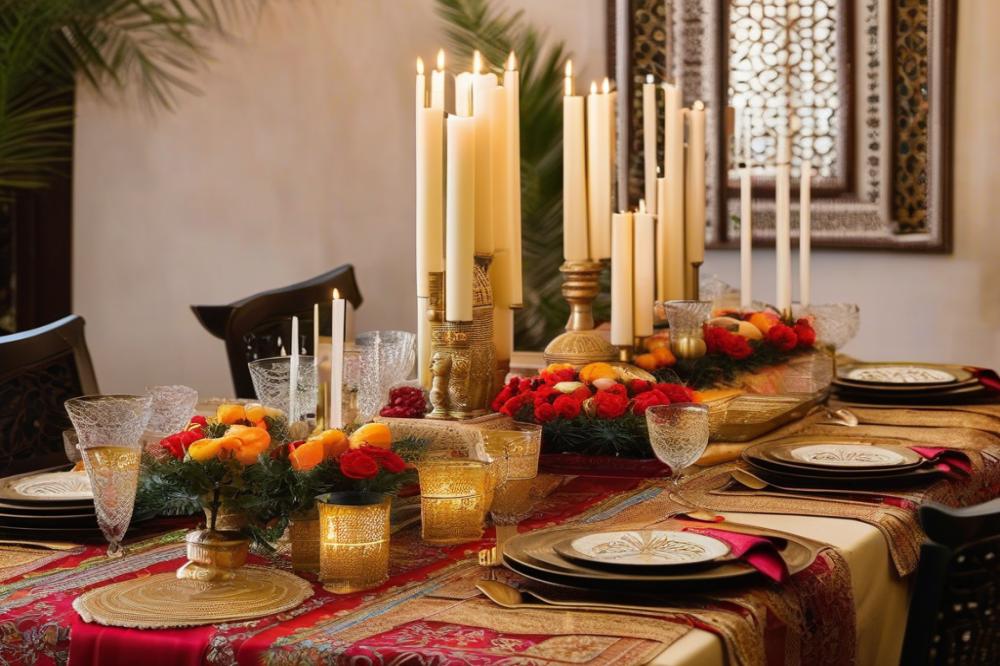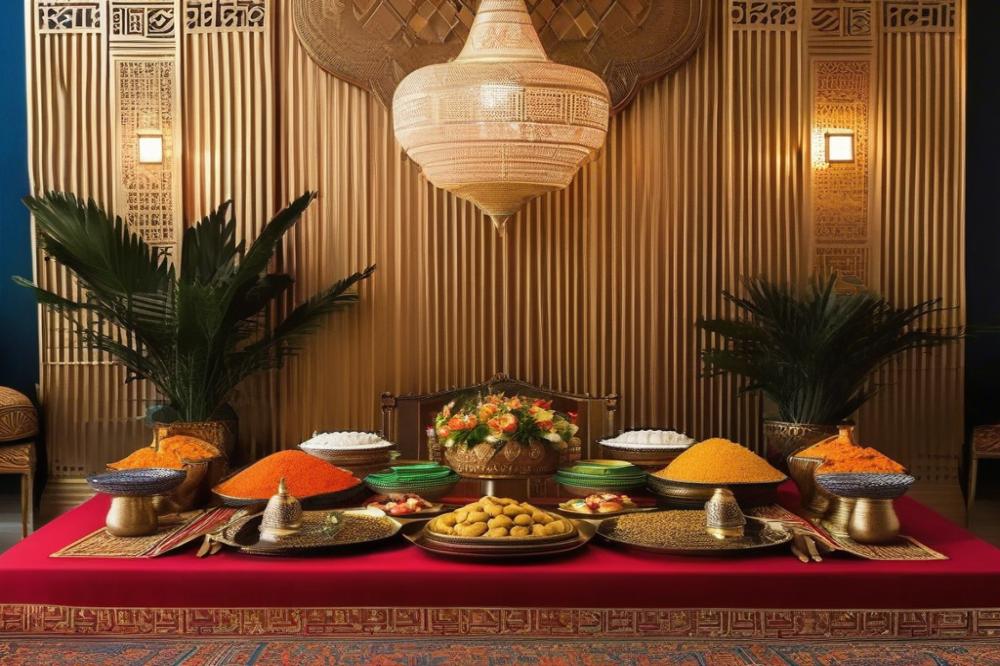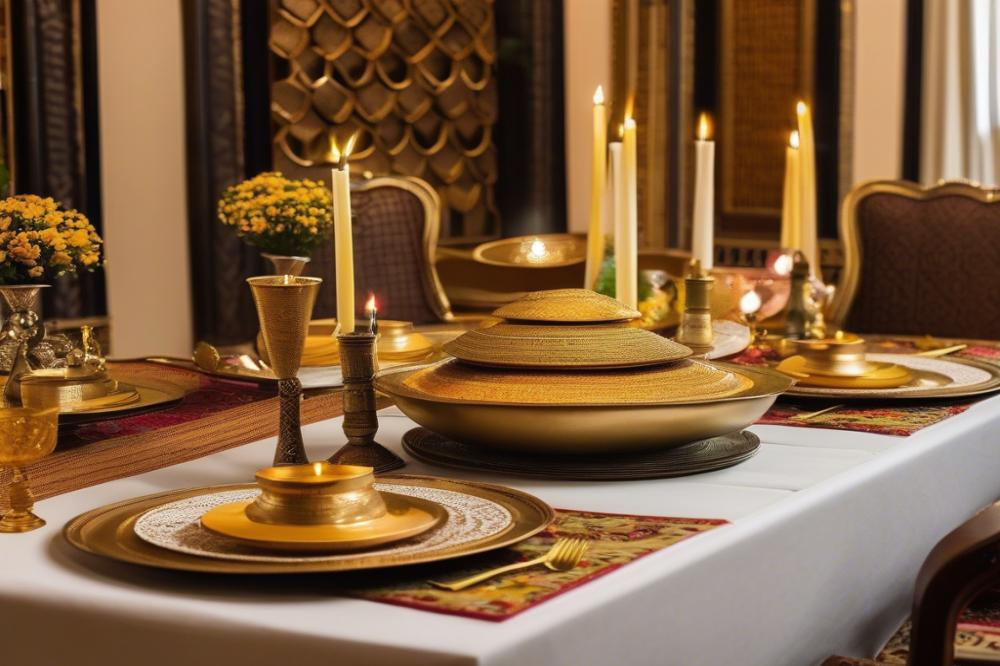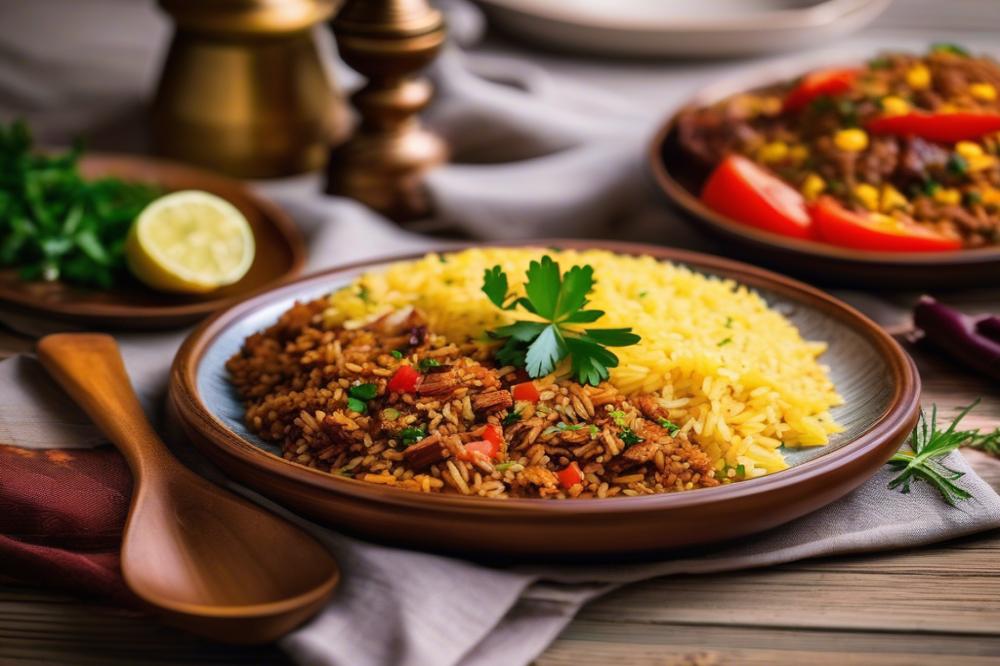Introduction
Fattah is a beloved traditional Egyptian dish that stands out for its rich flavors and cultural significance. This recipe features layers of rice, meat, and a tangy sauce often enriched with garlic and vinegar. Enjoyed during special occasions, it unites families and friends, making every festive meal more memorable.
Celebrated in many Middle Eastern kitchens, this dish showcases the incredible diversity within regional cuisine. While the traditional version frequently uses beef or lamb, variations involve different meats or even vegetarian options. These adaptations provide flexibility for different dietary preferences and tastes.
cooking Fattah involves a careful balancing of flavors and textures. The rice becomes fluffy and is layered with tender meat and a savory sauce that tantalizes the taste buds. Ingredients like garlic add a delightful aroma, while vinegar introduces a slight acidity that brightens the overall dish.
Throughout Egypt, Fattah is more than just food; it symbolizes hospitality and togetherness. Families often gather around a large platter, sharing this delicious Egyptian rice and meat dish with loved ones. Each bite carries the essence of tradition, making it a true representation of culinary heritage.
Understanding Fattah

The dish known for its rich flavors, Fattah is a staple in Egyptian cooking. It combines several key ingredients: rice, meat, garlic, and vinegar. These elements come together to create a meal that is both hearty and comforting. Often, people choose between beef or lamb as the meat base. Each choice offers a different taste that adds to the dish’s charm.
Rice serves as a foundation for this meal. It absorbs the delicious flavors from the meat and the accompanying sauces. This grain is common in many Middle Eastern recipes, but in Fattah, its preparation is particular. Garlic enhances the overall taste, giving it that distinctive aroma loved by many. Vinegar adds a slight tang, balancing the richness of the meat and the spices used in cooking.
Historically, this dish is more than just food. It plays an essential role in Egyptian celebrations and family gatherings. During festive meals, you can often find it gracing the table. Fattah represents a sense of togetherness, as families come together to share this delightful dish. Moreover, it connects people to their traditions, echoing the flavors of generations past.
In everyday life, this meal is also popular. Many will cook it on special occasions, but it is not limited to such times. People prepare it when they want to treat themselves or their loved ones to something extraordinary. Its versatility makes it a favorite in both the home kitchen and at gatherings, ensuring that it remains a beloved part of Egyptian culture.
Ingredients List and Cooking Instructions

To create a delicious Egyptian dish, gathering the right ingredients is essential. Here’s what you’ll need:
- 2 cups of rice
- 1.5 lbs of beef or lamb, cut into chunks
- 4 cloves of garlic, minced
- 1/4 cup of vinegar
- 1 onion, diced
- 4 cups of water or broth
- 2 tablespoons of vegetable oil
- Salt and pepper to taste
Cooking Instructions
Start by preparing the meat. In a large pot, heat the vegetable oil over medium heat. Add the diced onion and sauté until it becomes soft and translucent. This usually takes about 5 minutes. Next, add the minced garlic and stir for another minute. The aroma will fill your kitchen, giving a hint of what’s to come.
Now it’s time to add the beef or lamb. Brown the meat on all sides, allowing it to develop a rich color. Season the meat generously with salt and pepper. After browning, pour in the vinegar and mix well. This step adds a tangy flavor that balances the dish.
Pour in the water or broth. Bring everything to a boil. Once boiling, reduce the heat to low and cover the pot. Let it simmer for about 1.5 to 2 hours. The cooking time is key to achieving tender meat.
Meanwhile, focus on the rice. Rinse the rice under cold water until the water runs clear. This will remove excess starch and prevent it from becoming gummy.
About 30 minutes before the meat is ready, bring a separate pot of water to a boil. Add the rinsed rice, salt, and a drizzle of vegetable oil. Cook the rice for about 15 minutes or until it’s half done. Drain it and set aside.
After the meat has cooked sufficiently, taste the broth. Adjust the seasoning as needed. If the broth is too strong, you can add a little water. Strain the broth if you prefer a smoother texture.
Now, assemble the dish. In a large serving platter, start with the cooked rice. Spoon the tender meat on top, allowing some broth to drizzle over the dish. The rice absorbs the flavors beautifully. This dish is often enjoyed during festive meals, making it perfect for gatherings.
Finally, pour some of the reserved broth over the entire plate. This adds moisture and ensures every bite is flavorful. Your traditional Middle Eastern cuisine is ready to serve!
Nutritional Information

The Fattah dish, beloved in Middle Eastern cuisine, combines several key ingredients, each bringing its own nutritional benefits to the table. Understanding these can enhance appreciation for this traditional recipe.
Rice serves as the main carbohydrate source. A staple in many diets, it provides energy, essential for daily activities. One serving typically contains about 150 calories and offers a good amount of carbohydrates, vital for fueling the body.
Meat options such as beef and lamb contribute significant protein. This macronutrient is crucial for muscle repair and growth. A serving of cooked beef contains approximately 22 grams of protein, while lamb is similar, boasting rich amino acids. These proteins also support overall health and immune function.
Garlic, often a vital part of the cooking process, adds flavorful depth. Beyond taste, it has numerous health benefits. Garlic is known for its anti-inflammatory properties and can help boost the immune system. Incorporating it can enhance the overall health profile of any festive meal.
Onions, another key ingredient, provide vitamins and minerals. Particularly high in Vitamin C, they aid in immune support and can improve digestive health. They also add a rich layer of flavor, making dishes more enjoyable.
Vinegar plays an interesting role in Fattah. While it’s used sparingly, it can enhance flavor while offering potential health benefits. Some studies suggest vinegar may help regulate blood sugar levels, contributing to overall health.
Nutrients from these components together create a balanced meal option. The combination of carbohydrates, proteins, and vitamins ensures that diners receive a nourishing experience while enjoying a culturally rich dish. Cooking this traditional recipe not only satisfies hunger but also supports health in multiple ways.
Serving Suggestions and Variations

When serving Fattah, presentation plays a critical role. Traditionally, this dish is served on a large platter, allowing diners to help themselves. A vibrant garnish of fresh parsley or cilantro can add a splash of color on top. Thinly sliced fried onions often grace the dish, providing a crunchy texture that contrasts with the soft rice and tender meat. Accompanying it with a side of garlicky yogurt or tahini sauce elevates the flavors even further.
For those seeking a hearty meal, consider adding a simple salad with fresh vegetables. Cuts of cucumber, tomato, and bell peppers drizzled with olive oil give a refreshing balance to the richness of the meat. Additionally, pickled vegetables, a staple in Middle Eastern cuisine, can act as a tangy counterpoint to the savory components of the dish.
Regional Variations and Dietary Adjustments
Fattah is not just one dish but rather a canvas for diverse interpretations. In some regions, lamb is favored over beef. The choice of meat can significantly alter the overall taste. For individuals looking to avoid red meat, chicken serves as an excellent alternative. Cooking chicken in a similar style maintains the essence of the dish while aligning with different dietary preferences.
Vegetarians can rejoice too. Substituting meat with sautéed mushrooms or chickpeas leads to a satisfying meal. Another option could be roasted cauliflower seasoned with garlic and vinegar, creating a savory flavor profile that complements the rice. Options abound for anyone adhering to specific culinary lifestyles.
Fans of spice may incorporate chili flakes or harissa into their recipes for an added kick. Others might explore the use of smoked paprika for a deeper flavor. Every family may have its own way of adding personal touches, drawing on traditions passed down through generations.
Festive meals call for a more elaborate presentation. During celebrations, some may serve Fattah alongside grape leaves and stuffed zucchini, creating a grand spread. This not only enhances the festive atmosphere but also showcases the rich culinary heritage of the region.
The Heart of Egyptian Cuisine
This dish holds a special place in Egyptian tradition. Families often gather to enjoy it during important celebrations and festive occasions. Sharing a meal of rice and tender meat reflects more than just nourishment; it represents unity and joy among relatives and friends. Preparing this dish is a ritual that brings everyone together, creating memories that last a lifetime.
Embracing the rich flavors of Middle Eastern cooking can be a rewarding experience. Trying your hand at this recipe allows you to explore vibrant spices and hearty ingredients. From the fragrant rice to the savory meat, each element plays a role in creating a delicious meal. You do not have to be a skilled chef to get started. With practice, your confidence in the kitchen will grow.
In summary, making this culinary delight at home is both an adventure and a way to connect with Egyptian culture. As you cook, think about the countless families around the world who savor this same dish. Why not start today? Gather your loved ones and share in the joy of cooking and eating together.



